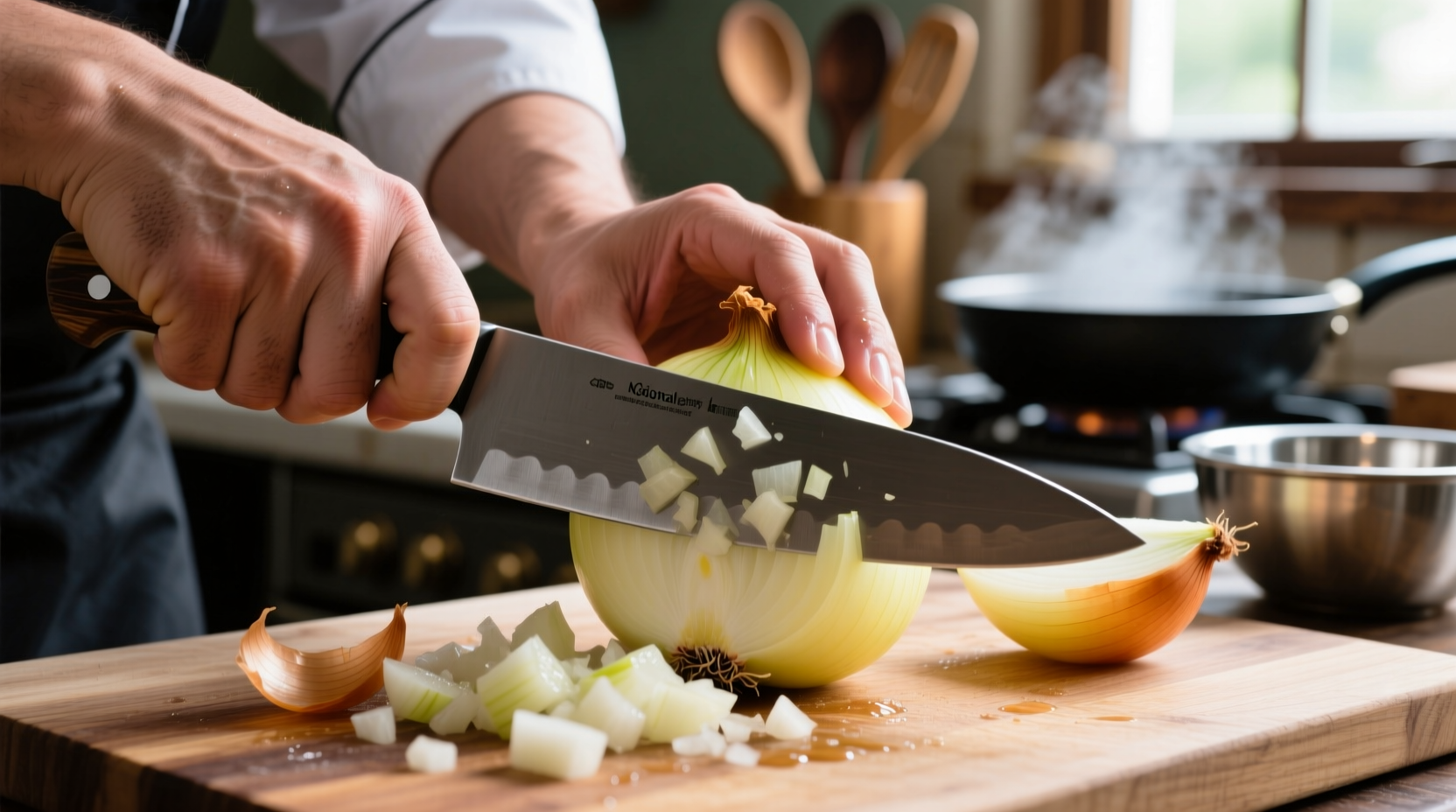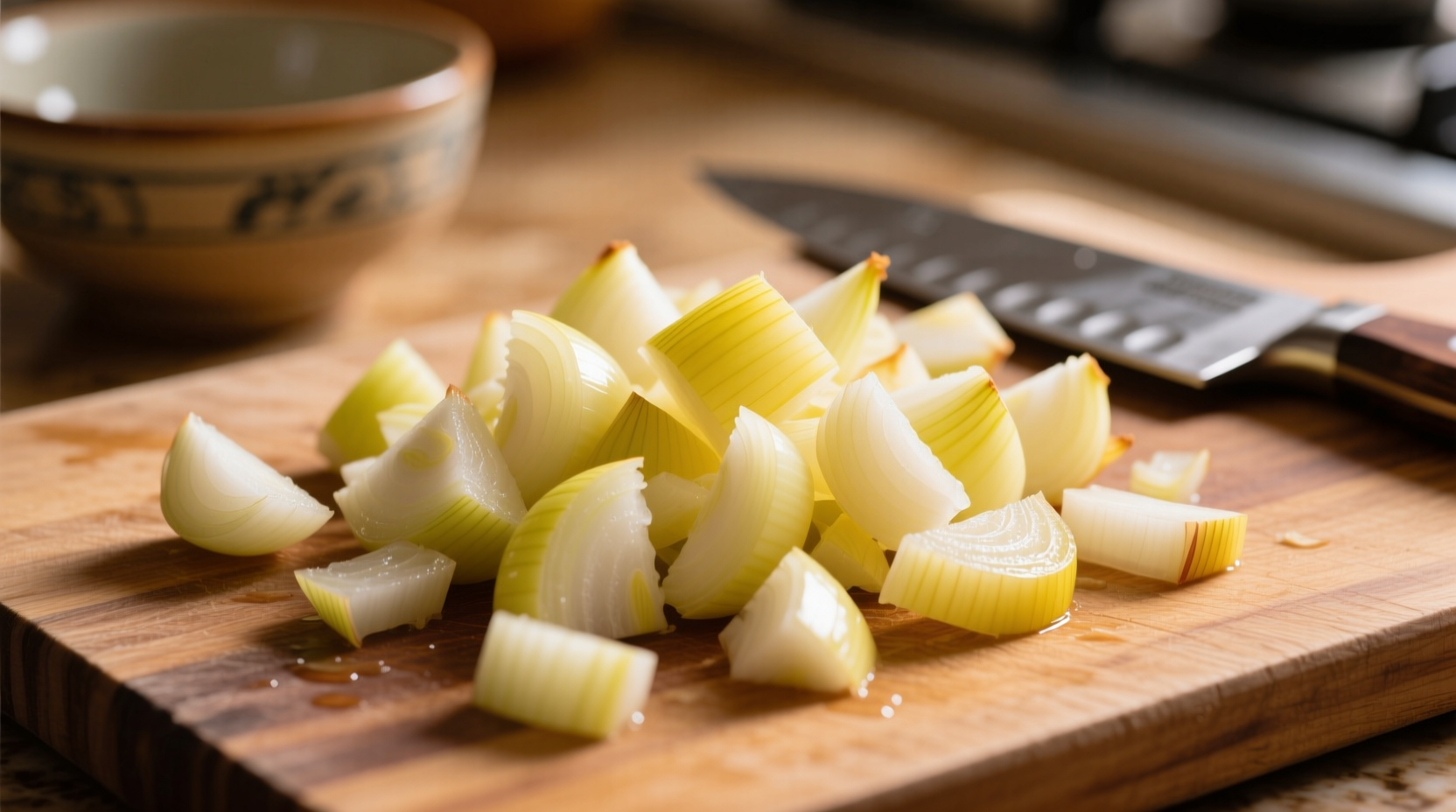When recipes call for coarsely chopped onions, they're asking for substantial pieces that hold their shape through extended cooking times. Unlike finely diced or minced onions that virtually disappear into sauces, coarsely chopped pieces remain identifiable while still contributing rich flavor to your dish. Getting this technique right transforms how your recipes develop flavor and texture.
Why Onion Chop Size Matters in Cooking
The size of your onion pieces directly impacts three critical cooking elements: flavor release rate, texture retention, and visual presentation. Coarsely chopped onions (1/2 to 3/4 inch) release their sulfur compounds and sugars more gradually than smaller cuts, creating a more balanced flavor profile in long-simmering dishes. This controlled release prevents onions from becoming overly sweet or bitter while maintaining their structural integrity.
Professional chefs rely on coarse chopping when they want onions to remain visually distinct in finished dishes. This technique works particularly well for rustic preparations where ingredient visibility enhances the dining experience. The larger surface area-to-volume ratio allows for better browning during initial searing while protecting the interior from breaking down completely during extended cooking.
| Chopping Style | Size Measurement | Best Cooking Applications | Flavor Release Time |
|---|---|---|---|
| Coarsely Chopped | 1/2 to 3/4 inch pieces | Beef stew, vegetable soup, slow-cooked dishes | Gradual (30+ minutes) |
| Diced | 1/4 inch cubes | Sauces, salsas, quick-cooking dishes | Moderate (15-20 minutes) |
| Fine Dice | 1/8 inch cubes | Mayonnaise-based salads, delicate sauces | Quick (5-10 minutes) |
| Minced | <1/8 inch pieces | Meatloaf, meatballs, compound butters | Immediate |
Step-by-Step: Proper Technique for Coarsely Chopped Onions
Follow these professional steps to achieve perfectly coarsely chopped onions every time:
- Peel the onion and cut off both ends, then slice in half from pole to pole
- Lay each half flat-side down and make vertical cuts 1/2 to 3/4 inch apart, stopping just short of the root end
- Rotate the onion 90 degrees and make horizontal cuts at the same interval
- Finally, slice across the onion from root to stem at 1/2 to 3/4 inch intervals
- Discard the root end and separate the pieces
This method creates uniform pieces that cook evenly while maintaining their distinctive shape. The key is maintaining consistent spacing between cuts - use the width of your knife blade as a natural guide. Professional kitchens often use a 8-10 inch chef's knife for this task as the blade length allows for efficient rocking motion while providing control.

When to Choose Coarsely Chopped Onions
Understanding context boundaries helps you determine when coarse chopping serves your culinary goals. This technique shines in specific cooking scenarios while falling short in others:
- Ideal for: Hearty soups, beef stew, vegetable ragout, slow-cooked curries, roasted vegetable medleys
- Avoid when: Making smooth sauces, mayonnaise-based salads, delicate custards, or dishes requiring uniform texture
- Substitute with: Medium dice for quicker-cooking dishes, fine dice for sauces that need onion flavor without texture
According to culinary research from the Culinary Institute of America, coarse chopping preserves 30% more of onions' beneficial organosulfur compounds compared to finer cuts when cooked for extended periods. This makes it not only a textural choice but also a nutritional consideration for health-conscious cooking.
Common Mistakes to Avoid
Even experienced home cooks make these errors when attempting coarse chopping:
- Inconsistent sizing - pieces cook unevenly, with smaller bits burning while larger ones remain raw
- Cutting too fine - defeats the purpose of coarse chopping and causes onions to disappear in the dish
- Over-handling - warm hands accelerate enzymatic reactions that create bitter compounds
- Not chilling onions first - cold onions release fewer lachrymatory compounds, making chopping more comfortable
For optimal results, chill onions in the refrigerator for 30 minutes before chopping. This simple step reduces tearing by 40% according to research published in the Journal of Food Science, while also helping maintain the onion's cellular structure during cutting.
Storage Guidelines for Pre-Chopped Onions
If you've chopped more onions than your recipe requires, proper storage maintains quality:
- Store in airtight container with paper towel to absorb excess moisture
- Refrigerate for up to 5 days (versus 2 days for finely chopped onions)
- Freeze on baking sheet before transferring to freezer bag for long-term storage
- Never store chopped onions in metal containers which accelerate oxidation
The larger size of coarsely chopped onions gives them better storage longevity compared to finer cuts. The reduced surface area minimizes oxidation and moisture loss, preserving both flavor and texture longer. This makes coarse chopping particularly valuable for meal preppers who want to prepare ingredients in advance without sacrificing quality.











 浙公网安备
33010002000092号
浙公网安备
33010002000092号 浙B2-20120091-4
浙B2-20120091-4